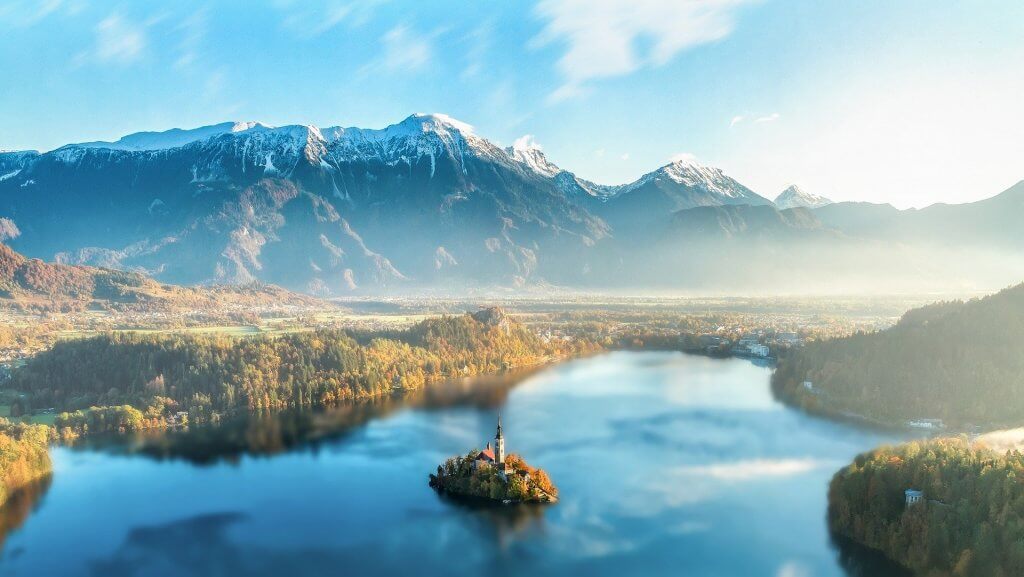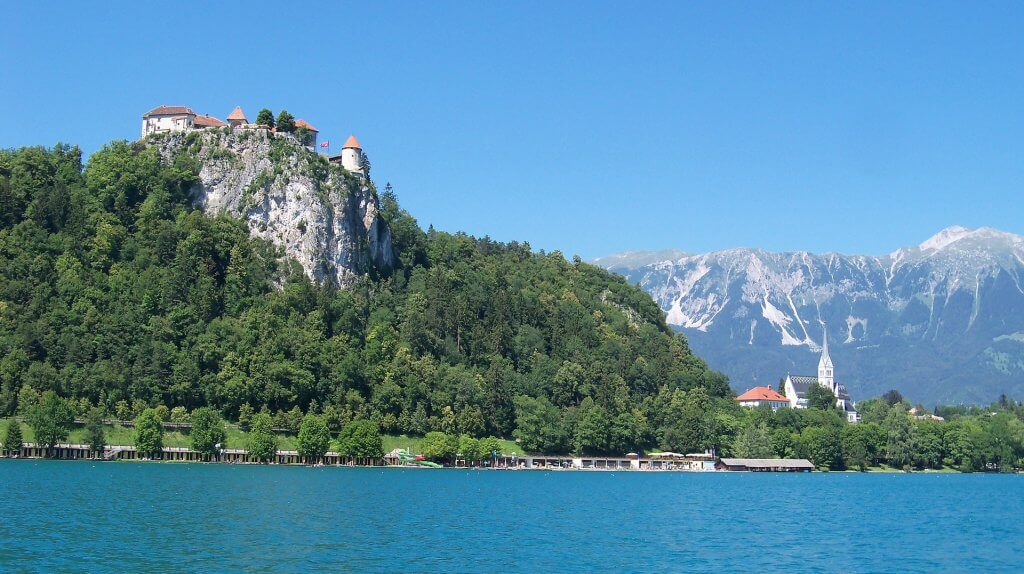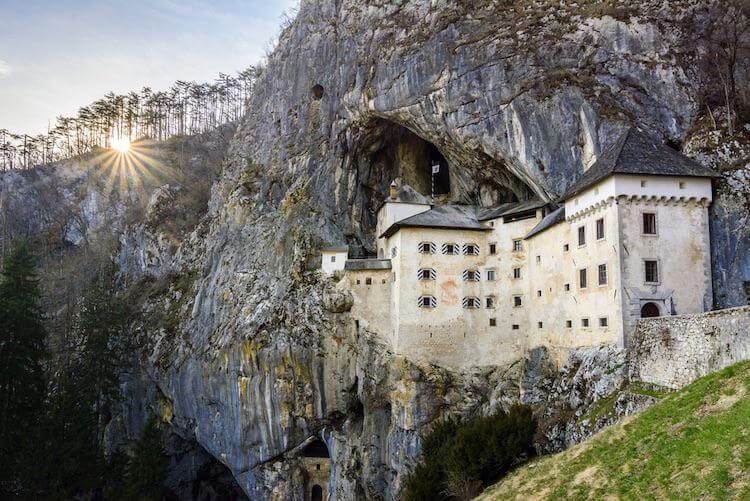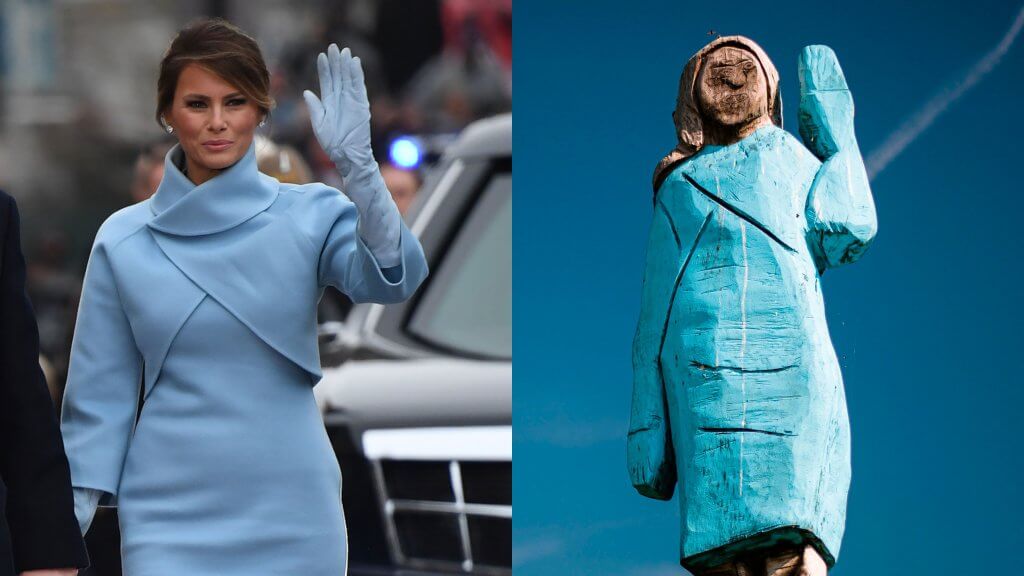A thousand years ago, a Chinese wise man said that a journey of a thousand miles begins with a single step.
Or so it is what their Communist party wants us to believe.
However, we from the Balkans know better. We do not have nor need a party to tell us things. We simply know our stuff, and we know what the guy actually said.
Are you ready?
Word on the street is that the wise man actually took a shot of rakija and said that “every crazy journey of a thousand miles begins with a single step in the Balkans”.
Want to know why? Embark with us on the Balkan roller-coaster and find out.
We will guide you through the region’s rich history, diverse culture and stunning geography by providing you with the most useful information, tips and tricks that any potential Balkan traveller needs to know.

And if you want to visit the Balkans the right way, your first step on the thousand miles journey will be Slovenia. Hopefully, you will enjoy our adventurers’ guide to Slovenia.
Why Slovenia?
Think of it this way.
We all know that introducing your girlfriend or boyfriend to your family can be quite stressful and often awkward. That’s why it’s common sense to start with the most normal members of your family so that the potential love of your life does not run away immediately.
Along those lines, the most normal member of our dysfunctional yet adorable Balkan family of countries is Slovenia. It’s the Balkan country your parents would love you to marry, settle down and have a child with.
Though who cares about what parents think? Slovenia is indeed charming and nice, yet we know you just cannot stop thinking about the mysteries that other Balkan countries conceal…
Ok, now for a random bonus question.
This picture was taken in a remote Slovenian village. Do you know whose statue is this? (Or at least should be). The answer awaits at the end of the article.

Slovenia Basic Info
Slovenia is not a big country, yet it represents the most successful state among those that rose from the ashes of former Yugoslavia.
The Republic of Slovenia definitely gained independence in 1991 after the breakup of Yugoslavia and has been a member of NATO and the European Union since 2004. It covers 20,273 square kilometres (7,827 sq mi) and has a population of 2.084 million.
The capital and largest city is Ljubljana with a population of around 300,000. Slovenia uses the Euro as its currency and is a member of the Eurozone and Schengen area.
The official language is Slovene, a Slavic language which is spoken by 92% of the population in their home environment. Hungarian and Italian are official in certain municipalities. Religiously, the majority (73%) of the population identifies themselves as Roman Catholic.
Here’s also a map of Slovenia because why not.

Ok, now that we covered the stuff you could’ve googled by yourself, let’s dive deeper into the specifics.
Slovenia History & Culture Traits
Historically, due to its position, Slovenia has been on the crossroads of the Slavic, Romanic and German worlds, which left its mark on the architecture of its cities and on the mentality of its people.
Even though we included Slovenia in our Balkan Roads bundle, the locals may argue that Slovenia is actually not in the Balkans but rather part of Central Europe. We’ll avoid this long geo-socio-political argument altogether, just play dumb and say we included them as a neighbourly courtesy.
Though one of Europe’s smallest countries, Slovenia is extremely rich in natural beauties, all of which are at most a few hours drive away from each other. If you think about it, that’s pretty convenient.
It’s not often that you can comfortably chill on one of the many beaches on the Slovenian Riviera in the morning, and go for a hiking tour in the Alps in the afternoon.
All in one day, if you will.
Slovenia also holds a rich gastronomic tradition.

Depending on the region of Slovenia you are passing through, you can enjoy both sweet water and sea fish or delicious meat dishes.
If you are thirsty, and you most certainly will be, you will have a vast choice of both red and white wines from local vineyards.
Slovenia has a long tradition in winemaking, having three main winegrowing regions (Primorska, Posavje and Podravje) that offer many top quality products to the occasional wanderer. If you’re a wine aficionado, this guide is more than enough for everything you want to know about Slovenian wines and wine regions.
If you are in a restaurant and you want to try all the wines from the menu, just be sure you are not the one driving. Not unless you want to discover how Germanic in mentality the Slovenian police is. So better fasten your seatbelt, as well.
You prefer beer? No need to panic.
Slovenian beer is well known for its quality, especially given the recent boom of small breweries. Out of the mainstream ones, a safe bet is the renowned Laško beer.
Fun fact: Slovenia is the 13th country in the world based on the consumption of beer per capita. As if they were trying to say: it is not only about quality but also about quantity. So chillax and order a cold pivo (beer) in any of the gostilna (typical family-owned restaurants) that you encounter along the road and be prepared to mingle with the usual guests.
Also remember, there are probably better conversation starters other than Melania Trump. And yes, she is Slovenian, not Slovakian.
Getting Around
Getting around Slovenia is relatively easy. This is due not only to its relatively small size but also because of its overall good infrastructure.
The whole country is crossed by an extended motorway network which is used daily by many to commute to work, especially towards the capital Ljubljana.
Keep in mind that if you decide to use the motorway, you will need to buy a vignette.
It’s a special tolling sticker that enables usage of Slovenian motorways. Get one from any gas station, just smack it on the windshield of your vehicle and you’re good to go. The price for a normal car ranges from 15,00 Euros for a week, up to 110,00 Euros for a year. Also, here’s everything there is to know about the vignette.

Slovenia has one international airport in Ljubljana (Jože Pučnik Airport) that serves as the main hub for air transport in the country and is served by companies such as WizzAir or EasyJet.
In case you opt for rail transport, Slovenia’s railway network is well connected to other European destinations such as Graz, Vienna, Budapest or Trieste. However, if you want to travel east, we highly recommend that you travel by road.
If by some reason you opt to travel by bus, Ljubljana’s bus station handles most of the domestic and international traffic.
Balkan Roads tip: All the previously mentioned options are fine. However, it should not be a surprise that the Balkan Roads Team suggests you take advantage of the good (and free!) road system that spans throughout Slovenia. The roads here are pretty decent and are the best way to experience the country and get to the main attractions.
Because it is not only about getting there, but also about how you travel and what might happen along the way, right?
Top Attractions
Here is a list of things you have to visit in Slovenia and a few hidden gems for true connoisseurs. The Google & TripAdvisor mainstream hotspots that you shouldn’t skip are:
1. Lake Bled
This Alpine lake with the only island in Slovenia has been a world-renowned paradise for centuries, impressing visitors with its natural beauty, wealth of legends, and special powers to restore well-being.

It’s also the home of the old, sad Slovenian legend of the Bled sunken bell.
If local myths and legends are not your cup of tea, you can still stroll on the walking trail that goes around the lake or climb to the Bled castle to enjoy a spectacular view as far as your sight goes. Once there, absolutely do not forget to treat your palates with the famous Bled Cream Cake, you will not be disappointed!
2. Postojna Caves and Predjama Castle
Over the past 200 years, the Postojna Cave has been visited by more than 39 million visitors from all over the world. The Postojna Cave is the only place where you can see the most precious brilliant in the form of a cave formation and also meet the baby dragons.
Just like the world above the surface, Postojna Cave boasts towering mountains, murmuring rivers and vast subterranean halls. It is a real challenge for explorers and the cradle of speleobiology.

From the magical depths of Postojna Cave make your way to the fairytale world of knights. The Predjama Castle is another must-see Postojna Cave Park attraction – a veritable medieval miracle, perched in the middle of a rocky cliff for 800 years. Its unique location makes it one of the ten most fascinating castles in the world.

3. Ljubljana Castle
The capital Ljubljana is a lively city with an abundance of lovely shops, theatres, concert venues, museums, bars and restaurants which fully blossom in early spring.
Among the many landmarks the city offers, the one that stands out is the Ljubljana Castle. A mighty medieval fortress and a symbol of the city, the Ljubljana castle is an interesting tourist point, the idyllic grounds for long strolls just a glance away from the hectic city centre. The castle offers many cultural, historic and entertaining events throughout the year.

Ok, we got the fancy spots covered, now for something different. When you decide to go for the lesser-known spots, these are among our favourites:
1. Lake Bohinj in the National Park Triglav
Located at 500m above sea level, and only 25 km from its more outspoken brother Bled, lake Bohinj offers an even more thrilling experience without the unnecessary glamour that would spoil the authenticity of this Mother Earth’s gem.

Part of the National Park Triglav, Lake Bohinj offers many outdoor activities for true nature lovers and adrenaline-driven individuals, including paddling, kayaking and hiking.
Regarding the latter, if you are lazy you might consider taking a cable car ride that will bring you to Vogel, one of Slovenia’s biggest winter ski resorts and starting point to many hiking trails. Once up there at 1533m, you will be able to enjoy a breathtaking view of the lake and gaze in the distance Slovenia’s highest peak, Mount Triglav, standing tall with its 2864m.
Fun fact: Slovenes are so proud of Mount Triglav that it is actually embedded in the national flag.
Should you consider staying for a few days in Bohinj, you can also test your endurance by hiking your way up to Triglav, but be aware you will need to be well equipped, properly dressed and physically fit, as the trail requires at least two days to complete.
In return, once you reach the top, be sure your phone battery is full if you want to have the best Instagram story among your friends, at least until you reach the next destination of our guide.
2. Planica ski jumping venue
By now you have probably realised Slovenes take winter sports very seriously.
Nowhere is this more visible and authentic as in Planica, a legendary ski jumping venue since the 1920s where the world record has been broken more than 30 times.
It is also the biggest ski jump in the world!

Have you been to a football game? Being in Planica in March when the official competition takes place usually is like being on the Camp Nou stadium when Barcelona is playing, just with much much more alcohol among the crowd.
Since 2016, you can learn everything about the venue and the history of the sport itself in the Planica Museum that was opened within the Slovenian Nordic Center.
A particular highlight of the Nordic Center is the wind tunnel, where you can experience how it feels to fly.
Trust us, it is easier, less time consuming and safer than jumping off a plane – and you have the same amount of fun!
3. Kolpa rafting and kayaking
Are you a fan of rafting or kayaking? Slovenia offers a perfect river for all those that enjoy rafting or kayaking or want to try it for the first time.
The river Kolpa marked for centuries the border between Slovenia and Croatia. Each year, the number of visitors has been increasing due to its beautiful nature, lush vegetation and excellent food.
Rafting between states on the river Kolpa can be an unforgettable experience that you can share with your friends.
If you are a more of an adventurous type, you can even boat for several days both up and downstream, picnicking, fishing and relaxing on the riverbed every time you need a break.
After all, it is well known there is no rush in the Balkans.

4. Sečovlje Salina Nature Park
If your trip takes you to the sunny Slovenian Riviera and you want to act as a typical tourist, you should consider visiting the picturesque Mediterranean towns of Koper, Izola, Portorož and Piran. They are indeed beautiful.
But if you are reading this, we know you think out of the box and want something more elusive and authentic. For that, go and visit the Sečovlje Salina Nature Park situated in the municipality of Piran.
The Sečovlje Salt Pans are one of the last salt pans in the Mediterranean where salt is obtained manually with a several hundred years old method. The traditional and human-friendly method of salt production has through time enabled the development of a special living environment in the salt pans and near them.

On their site, they claim that “in the Sečovlje Salt Pans, nature and man go hand in hand”. Our advice: rather than with nature, go to Sečovlje hand in hand with a beer.
Budget
Planning a correct budget is always one of the most arduous tasks, as it depends on the things you plan to visit and the activities you want to undertake. In this section, we’ll try to provide a general estimate of what your expenses might be per person.
Generally speaking, Slovenia is not all that expensive. Still, some spots and attractions might boast very west-European prices and are not in line with what you’ll experience in other countries on your Balkan route.
Insurance, accommodation & gas
Even though Slovenia is a member of the European Union, it would still be smart to buy travel insurance for the duration of your planned stay in Slovenia, especially if you are British (Or you can ask Farage to cover your expenses, just in case).
Slovenia offers a wide variety of accommodation types and value for money in general. Taking into account regional differences and how touristy the place is, you can find a bed in a hostel for as low as 15 Euros a night while the price might go up to 80 Euros for a double room in a hotel, which can still be a good deal.
Depending on how large your group is and what is your method of transportation, the best option is to find a good apartment or house outside of the biggest urban centres. Even in that case, you should not plan to spend more than 40 Euros per night per person if you want to be on the safe side.
Regarding transportation, the average price of gasoline as of January 2020 is 1,3 Euro/litre.
Eat & drink
As per food and drinks, Slovenia offers excellent value for money, especially compared to Western European countries. An average meal would cost you between 12 Euros and 20 Euros in a restaurant, while a burger and a soft drink costs around 8 Euros.
When it comes to drinking in Slovenia, you’ll be pleasantly surprised by the prices. A glass of wine in a restaurant is usually between 2 Euros and 3 Euros, and a bottle of good wine from a supermarket is typically around 5 Euros. If you’re more of a beer drinker, you can expect to pay 2.50 Euros for a pint in a pub or restaurant. A litre bottle of water is 1.50 Euros, while coffee can cost you between 1.50 Euros and 2.50 Euros.
All summed up (weekly budget per person): approx 300 – 600 Euros
*45 Euros – 80 Euros per day per person, including accommodation, transportation, food&drinks and activities
Trivia
Let us give you a free piece of advice whose importance cannot be stressed enough.
The first thing you should never ever forget when visiting Slovenia is that it is not Slovakia. An innocent mistake made by many visitors but one that will certainly make you look like a moron in the eyes of the Slovenes. If you accidentally forget that while speaking to the locals in a gostilna (tavern), try to salvage the situation by praising Slovenian basketball wunderkind Luka Dončić’s last week performance in the NBA.
If you really want to make it up to them, praise the achievements of the world record holder ski jumper Peter Prevc. We know you probably do not know what kind of sport ski jumping is (especially if you did not visit Planica yet), but trust us, you will thank us later.
Regarding the knowledge of foreign languages, Slovenia ranks among the top European countries.
As of 2007, 92% of the population spoke at least one foreign language and around 72% of them spoke at least two foreign languages, which was the highest percentage in the European Union.
Slovenes love sport and use every occasion to spend time in the countryside or on the seaside.
Ljubljana has been constantly ranked among the top 10 greenest cities in Europe.
The Slovene language might just be spoken by 2.3 million people, but there are still 46 different dialects. Good news: beer is pivo in all of them, so no panic.
Now for the answer to the question about the wooden statue from the beginning of this article. It’s Melania Trump’s statue.

Yep.
That’s her, apparently.
A chainsaw-carved-wooden-statue hommage to the US’ first lady made by a conceptual artist somewhere near her birthplace.
Let us just conclude that this is only the tip of the iceberg of craziness that is the Balkan.
You should definitely come and check by yourself.
We promise it will be worth it.
—
There’s still a lot to say about Slovenia but we have to save something for when you join the Balkan Roads trip, right?


